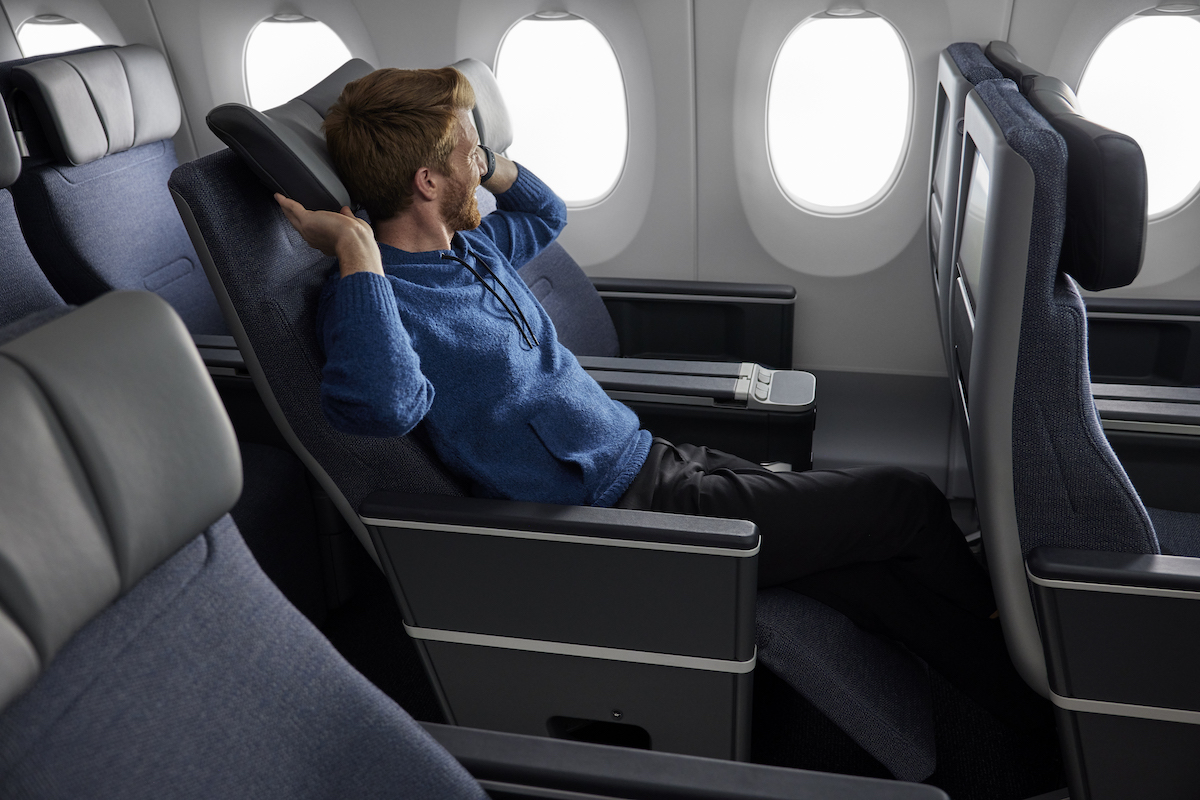Skift Take
Finnair is the latest airline to cash in on the growing premium leisure travelers market. The carrier is will add lucrative premium economy seats to its long-haul jets to tap into what CEO Topi Manner has called an "increasingly important" passenger segment.
The coronavirus pandemic has turned the airline business on its head. The recovery in corporate travelers that were the industry’s bread-and-butter for decades continues to lag, while leisure flyers are back strong. Flush with pandemic savings, those eager-to-travel vacationers are splashing out for a little luxury on their trips.
This is what airlines call “premium leisure” travel, or vacationers who buy seats in a premium cabin, whether its premium economy, business class, or even first class. The ranks of global carriers have increasingly called out this pandemic trend as a growing market — and opportunity — for them as the industry recovers.
Finnair is the latest to cash in on this trend with a $228 million (€200 million) investment in new business and premium economy cabins on its long-haul Airbus jets unveiled Thursday. The airline’s existing business class will get an update with new lie-flat seats from Collins Aerospace and designed by Tangerine. But the bigger news is Finnair’s first premium economy cabin, which is a product slotted between business and economy class. The airline’s new seats from HAECO and also designed by Tangerine offer 50 percent more space than economy seats, and an elevated onboard soft product while lacking all the bells and whistles — and price — of full business class.
“Premium leisure is a trend that has been significantly accelerated during the pandemic, so we are confident our new premium economy travel class … will prove very popular with customers,” said Finnair Chief Commercial Officer Ole Orvér on Thursday.
Premium economy cabins are the big winner in the premium leisure trend. Many airlines tout it as the most profitable real estate onboard their aircraft. In October, Air France-KLM CEO Ben Smith called the group’s premium cabins, and in particular premium economy seats, a “true asset” for Air France and KLM as they recovered from the pandemic. And executives at Delta Air Lines, International Airlines Group (IAG) that owns British Airways and Iberia, the Lufthansa Group, and United Airlines have all touted the strength of premium leisure in the recovery.
And Emirates, long a holdout on offering travelers a seating option between economy and business class, bowed to competitive pressure and began offering a premium economy cabin on select aircraft at the end of 2020. In November, Emirates President Tim Clark told FlightGlobal that the airline had seen a “hugely positive response” to the product and, as a result, would install it on more than 100 wide-body jets.
Finnair’s premium economy investment comes at the expense of traditional business class. The airline will shrink the business cabin by as many as 17 seats — though on most aircraft it will shrink by just two to four seats — to add the new premium economy cabin. Following the retrofits that are due to wrap in 2023, Finnair’s A350s will come in two layouts: one with 43 business class and 24 premium economy seats, and another with 30 and 26 seats, respectively. Its A330s will have 28 business and 21 premium economy seats. The economy cabin layouts remain largely unchanged.
McKinsey & Company warned in April that such a shift was likely as airlines recalibrated their businesses to less corporate demand. In a report looking at how the industry could adapt to post-pandemic travel trends, the adviser said smaller business cabins and larger premium economy ones could be necessary to “better cater to premium-leisure passengers.”
“Premium leisure as a segment will be increasingly important for an airline like us post pandemic,” Finnair CEO Topi Manner said in April. The new cabins, which were repeatedly hinted during the past year, are part of a larger investment in making the carrier a “modern premium airline.” Other recent investments include a new terminal at Finnair’s Helsinki base, updated passenger lounges, and new direct distribution systems that Manner said offer more choices to customers.
The new cabins come as Finnair’s recovery remains hamstrung by continued border restrictions in Asia, its largest long-haul market. In January, the airline delayed the restart of two routes to Japan, and pulled down capacity to Hong Kong and Singapore citing the the Omicron variant surge in Covid-19 cases. Finnair has added new flights from Stockholm to Thailand and the U.S. in order to utilize its wide-body jets while China and other Asian countries remain largely off limits to visitors.
Finnair will unveil the first routes for aircraft with its new business and premium economy cabins on March 1. The products will enter service this spring.
The Daily Newsletter
Our daily coverage of the global travel industry. Written by editors and analysts from across Skift’s brands.
Have a confidential tip for Skift? Get in touch
Tags: finnair, premium economy, premium leisure
Photo credit: Finnair will install new premium seats on all of its long-haul jets by the end of 2023. Finnair
